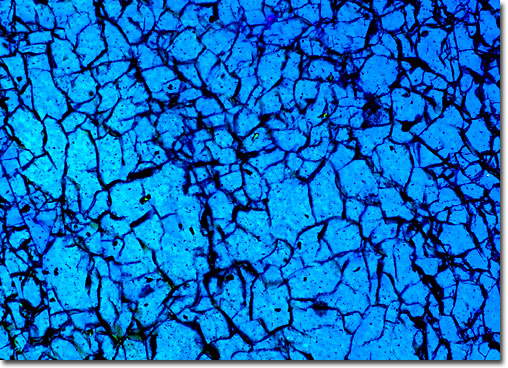Turquoise
|
Turquoise is one of the oldest known gem materials, mined in the Sinai Peninsula before the 4th millennium BC in one of the world's first hard-rock mining operations. It was also mined by ancient Egyptians, Mayans, and Aztecs. Turquoise is often worn as jewelry, but is also used to create elaborate mosaics for decoration or religious purposes. In ancient Mexico, turquoise was reserved for the gods and was not worn by mere mortals. The word for turquoise comes from pierre turquoise, the French phrase for "Turkish stone," which probably originated in the fact that it was transported to Europe through Turkey or in the mistaken belief that it came from Turkey. Others believe that the name comes from the Persian word for turquoise, firouze, since Persia had been a major source of this gemstone for thousands of years. In either case, the blue of this gemstone is so vivid and distinct that the English language utilizes the name to indicate a particular shade of blue. The deep blue color of turquoise was thought to have powerful metaphysical properties by many ancient cultures. The Apache Indians believed that turquoise gave warriors and hunters better aim. The Zuni believed that it protected them from demons. In Asia, turquoise was considered protection against the evil eye. Tibetans carved turquoise into ritual objects as well as wearing it in traditional jewelry. Turquoise was also thought to promote prosperity. Nearly all turquoise is cryptocrystalline (along with jade and lapis), meaning that the crystals can only be seen by a microscope. In fact, scientists thought turquoise was amorphous (non-crystal forming) until 1911, when crystalline specimens were found in Virginia. Usually found in association with copper deposits, turquoise is sometimes collected as a by-product of copper mining. Turquoise occurs as nodules and veins that are either blue or green in color. The mineral is composed of hydrated copper and aluminum phosphate and is a secondary mineral deposited from circulating waters. It occurs chiefly in arid environments as blue to greenish, waxy veinlets in aluminum-rich, weathered, volcanic, or sedimentary rocks. The most important turquoise deposits are in Iran, Tibet, China, and the Southwestern United States. Turquoise from Iran is often said to be the best, because it is sometimes a clear sky blue with no green and no black veins running through the stones. Turquoise of equal quality is also produced in Arizona and New Mexico. Gem scholars agree that the tradition of birthstones arose from the Breastplate of Aaron described in the Bible (Exodus 28, 15-30). The breastplate was a ceremonial religious garment set with twelve gemstones that represented the twelve tribes of Israel and corresponded with the twelve signs of the zodiac and the twelve months of the year. There are many different birthstone lists, however, and some argue that they should be assigned by astrological sign and not month. Turquoise is the birthstone for December and the zodiac sign Sagittarius. |
© 1995-2025 by Michael W. Davidson and The Florida State University. All Rights Reserved. No images, graphics, software, scripts, or applets may be reproduced or used in any manner without permission from the copyright holders. Use of this website means you agree to all of the Legal Terms and Conditions set forth by the owners.
This website is maintained by our
|
